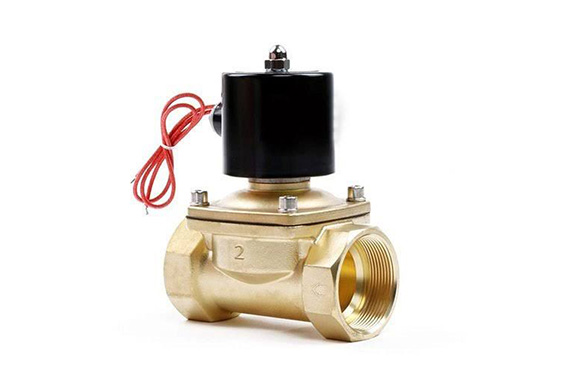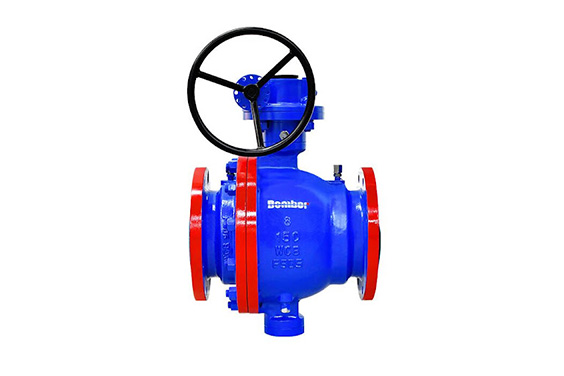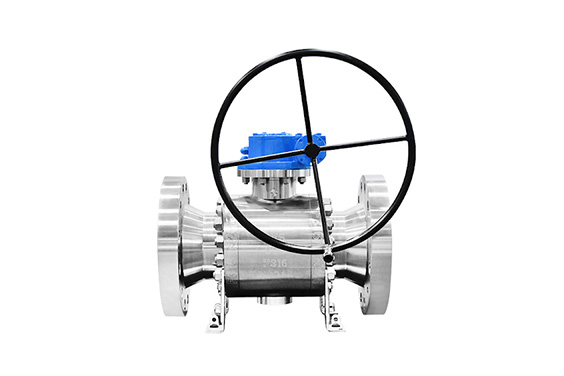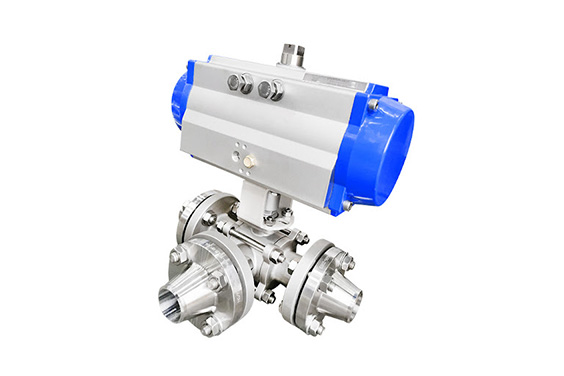What Is Solenoid Valve

An electric current is used to operate a solenoid valve. In a valve system, the solenoid regulates the current flowing through the valve. A solenoid is a cable coil that functions as an electromagnet. The solenoid valve is closed, and the aperture is blocked by a plunger when it is at rest. A straightforward electric current passes through the solenoid and generates a magnetic field, which opens the valve. The plunger is raised, and the valve is opened by this magnetic field.
The most often utilized control components in fluidics are solenoid valves. Their duties include turning off, releasing, dosing, distributing, and mixing liquids. They are utilized in numerous fields. Quick and secure switching, long service life, high durability, reasonable medium compatibility of the materials employed, less control power, and compact design are all advantages of solenoids.
The properties of the electric current used, the intensity of the magnetic field produced, the method used to control the flow of liquid, and the kind and qualities of the liquid are all different between solenoid valves. From linear action, plunger-type actuators to pivoted-armature actuators and rocker actuators, the mechanism differs.
The valve may have a two-port configuration to control a flow or a three-port configuration, or more to change flows between ports. On a manifold, several solenoid valves can be grouped together. The way solenoid valves function is another way to identify them. A tiny solenoid can only provide a modest amount of force. One can acquire the best solenoid valves from an industrial valve manufacturer.
What Is Ball Valve

In order to control flow, ball valves utilize motors to rotate a ball with a gap in the middle. The valve is completely open when the hole is parallel to the flow, and it is shut down when it is twisted in the opposite direction. Unlike solenoid valves, the majority of electric ball valves do not need the power to maintain their position. A few ball valves with electric actuators can be manually opened or shut down.
Ball valves perform admirably when there is a lot of flow. For instance, airports employ them to de-ice planes, managers of greenhouses utilize them to water the facilities, and farmers employ them to irrigate vast crops. Ball valves are used in buildings equipped with fire suppression systems to open and shut down the sprinkler heads.
Electric controls can pass liquid, gas, or air through ball valves. To handle huge systems, a few retain numerous valves. Industrial ball valves are dependable, operating well even after numerous cycles and lengthy duration of inactivity. They are frequently preferred to gates and globe valves for shutdown and control applications because of these characteristics.
Floating balls are frequently chrome plated for durability, and valve bodies are constructed of plastic, metal, or metal with ceramic. A ball valve’s drawback is that, when utilized to regulate water flow, it traps water in the center cavity when it is closed.
Solenoid Valve Vs Ball Valve: Primary Differences

Materials
- Solenoid Valves
Brass, stainless steel, plastic, and aluminum are common materials for valve bodies, which need to be compatible with the liquid. The fluid and the seals must get along. The plug nut, core, shade ring, springs, and other parts are frequently exposed to the fluid; therefore, they too should be compatible to ease the sealing concerns. Iron has high magnetic characteristics and is ideal for the plug nut and core, but it is corrosive. Since stainless steels are available in magnetic and non-magnetic forms, it can be utilized.
- Ball Valves
Body parts can be made from any of these materials, including brass, stainless steel, chrome, titanium, bronze, PVC, CPVC, and PFA-lined. Ball valves also make use of a broad range of seats and seals. The specific applications that each substance is acceptable for depend on its chemical compatibility, operating temperatures, and operating pressures. Viton, TMF, Delrin, Virgin PTFE, Polychlorotrifluoroethylene, Nylon, Reinforced PTFE, Graphoil, Ultra-High Molecular Weight Polyethylene, Metal, and PEEK are a few of the materials used.
Types
Here are the primary differences when it comes to their different types.
- Solenoid Valves
Inlets and outlets are the two ports that solenoid valves typically have. There are numerous solenoid valve varieties with three or more ports.
Single-acting actuators, like diaphragm actuators, are run by three-way solenoids. They are made to deliver air solely to a single actuator chamber. In order to override or interrupt an instrument signal for double-acting actuators with a pneumatic positioner, three-way solenoids are employed.
Positive two-directional motion is offered by four-way solenoids. They can be employed to give on or off action for double-acting valves rather than positioners. When the solenoid is de-energized, it tires out the other side of the actuator while sending the entire air supply to a single side of the actuator.
- Ball Valves
There are two types of ball valves: Trunnion mounted and floating ball designs. How the ball is inserted into the valve is indicated by the kind. Body types and configurations are further divisions of types.
The most popular kind of ball valve is the floating ball form. This style allows you a great deal of freedom because the ball is not fastened to the stem. By pressing the ball back against the rear or downstream seat, the upstream pressure aids in the formation of the seal.
A pin secures the ball in the Trunnion ball valve design so that it would not fall out. It is possible to apply this architecture for systems moving quickly. Trunnion valves reduce friction between the ball and seal by using a unique segmented ball.
Applications
Here is another difference between solenoid and ball valves.
- Solenoid Valves
Many different industries employ solenoid valves. They are utilized in machinery, apparatus, and tools like automatic faucets and refrigerators. In central heating systems, solenoid valves are frequently utilized to regulate the thermostat and manage the flow of warm water to the heating component. Additionally, they are utilized in pharmacology research, fluid management, air control, and automatic irrigation sprinkler systems.
- Ball Valves
There are numerous applications for ball valves. They are employed in generator skids, LNG plants, hydrocarbon processing, oil refinery feedstock lines, industrial gas processing plants, polymer plants, tank farms, separator skids, compressor skids, gas feed lines, crude oil plants, field gas plants, and automated process applications. The ball valves designed specifically for high-pressure are vital for subterranean, cryogenic, and subsea applications. Besides that, these valves, which are prepared from stainless steel, are critical for desalination, brewing, feedwater, petroleum refining, and cooling water.
Valve Components
Solenoid valves can be combined into many fluid management systems and are available in a broad range of sizes and materials. To deter premature valve failure or media contamination, the valve’s body should be constructed from a material that shows compatibility with the system media. The seal, coil, and valve ports are the three most crucial factors to take into account when choosing a solenoid valve.
Ball valves essentially consist of an exterior shell, a ball with a cavity in it, and an actuator like a handle. There are numerous body types for ball valves, such as reduced bore, full bore, and V-notch. Based on the demands of the particular application, all these ball valve types offer particular advantages. The valve’s body contains numerous components of the valve, such as trim and bonnet. These valves are accessible in a wide range of styles to make sure that they work properly in the desired application.
Seals
- Solenoid Valves
The most limiting aspect when choosing a solenoid valve is typically the seals. The chemical makeup of the media, as well as the system’s temperature and pressure, should all be taken into account when choosing the seal’s material. Nitrile rubber (NBR), Viton, ethylene propylene diene monomer rubber (EPDM), and PTFE are the most popular options for seal materials.
- Ball Valves
The valve pressure rating and building materials can affect the type of seal. Two full-contact seals can be applied to both the inlet and output ports using a floating seal. Seals provide support for the ball, which does not touch the body. A floating seal works best for demanding, heavy-duty applications because it supports the ball while sealing the flow. Lubrication is not needed for ball valves.
Valve Sizing
A solenoid valve’s adequate size can be boosted through servo or pilot operation. When referring to solenoid valves, the term “servo-operated” denotes that the small valve in a servo or pilot circuit operates the central valve, which is fluid-powered.
The science of valve sizing involves calculating the flow via the valve’s diameter. Two different-sized apertures in valves that can withstand a pressure decrease may be present. For throttling valves, valve sizing is typically performed for this reason.
How To Choose

Before selecting a valve, one must determine its intended application. Ascertain whether it will be used to control or stop a fluid’s flow. Then it is necessary to validate the type of material that will be broadcast through the system. If the medium is corrosive, chemically neutral, a food product, a medicinal fluid, or all of the above, determine whether special sanitary conditions are required.
Regarding the operating system, it is essential to know whether the valve is powered manually or automatically. To control the valve in one circumstance, a human must be present; however, in other situations, the valve can be controlled remotely.
It is also important to think about the type of assembly or installation that will be used, especially if the valve needs to be bolted through flanges or tightened in. After establishing these numerous components, one can focus on the installation’s technical aspects, particularly the flow and pressure that will allow one to determine the size of the valve.
Conclusion
Valves arrive in different types, sizes, lifetime, purposes, and control capacities. Solenoid and ball valves both supervise the flow of liquids or gases using an easy on or off function or a unique feature. Depending on your industrial requirements, it is possible to determine the right valve choice between ball valves and solenoid valves.
Once you have specified the valve type, make sure to get in touch with a well-known Chinese industrial valve manufacturer. By talking to the experts, you can get a decent quote and even samples for bulk orders.









